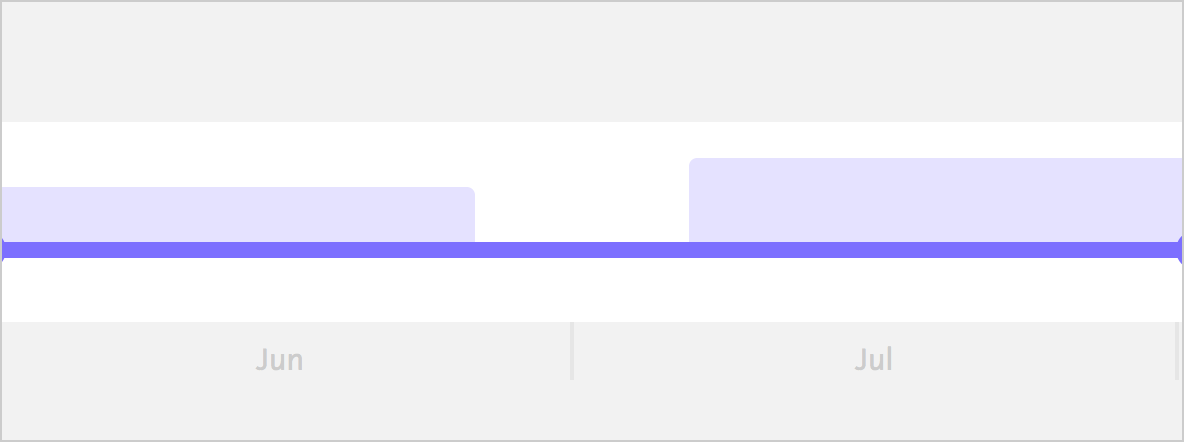
Creating Your First Workloads
In Cushion, Workloads represent the “weight” of projects in your schedule.

A project might span several months in your timeline, but that doesn’t necessarily mean that the project is 5 days a week. With workloads, you can specify the anticipated intensity of a project and indicate when you expect to actually work on it.

To resize workloads, you can either specify dates using the date pickers or drag the edges of the workload. You can also reposition the workloads by clicking and dragging from the center of the workload.

Workloads have an optional name field to describe the type of work they represent. This could be phases of a project, like “Design” or “Development”, or rounds, like “Revisions”.

You can also use the empty space between workloads to indicate downtime. If a year‑long project consisted of months waiting for the client, you will clearly see that downtime in your schedule.

Cushion uses workloads to detect when you’re overbooked. If your workloads exceed your weekly limit, Cushion will highlight that segment of your schedule. You can modify your limit in the preferences.

Cushion also uses workloads to detect your availability. Based on your availability preferences, Cushion will highlight the area of your schedule when you have an opening. You can also display your availability on your website using the Availability Badge add-on.